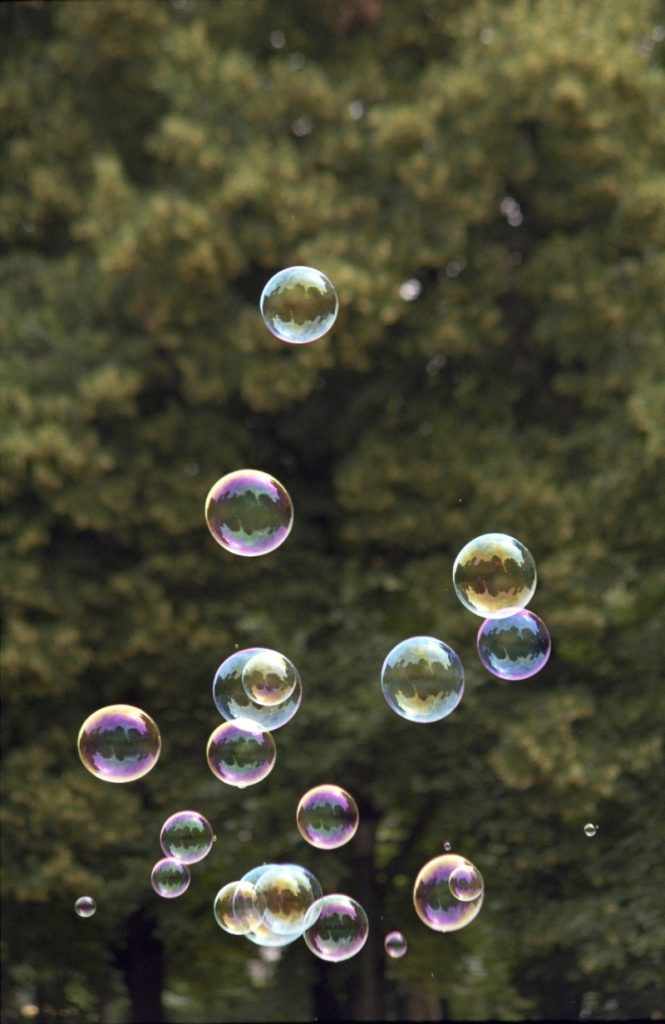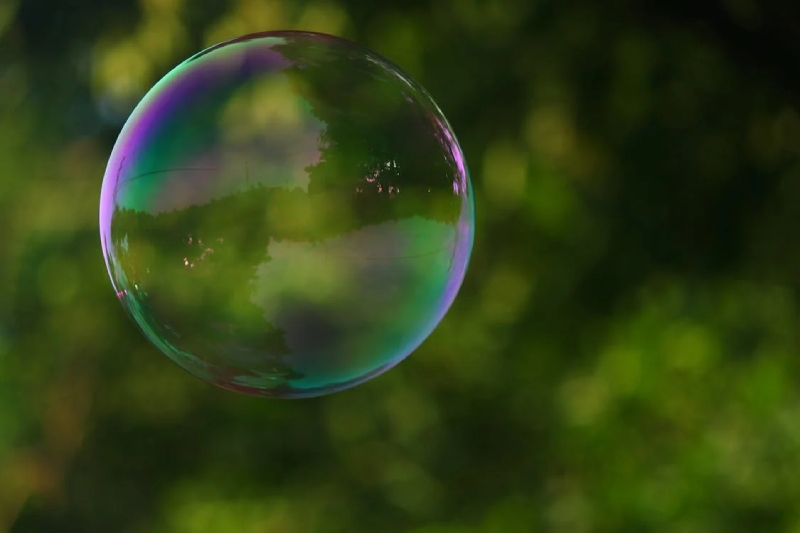We’ve all blown bubbles as children, marveling at their iridescent spheres that float through the air. But have you ever wondered why bubbles are always round? The answer lies in the fascinating world of physics, specifically surface tension and the concept of equilibrium.
The Physics of Surface Tension
Imagine a thin layer of water molecules tightly knit together. This film acts like a stretchy sheet, and that’s exactly what the surface of a bubble is. This “skin” of the bubble is due to surface tension, the attractive force between the water molecules at the surface. It’s like tiny hands pulling on each other, trying to minimize the surface area.

Pressure and Equilibrium
The air trapped inside the bubble pushes outward, while the surface tension pulls inward. For a bubble to be stable, these forces need to be balanced. A sphere is the perfect shape for achieving this equilibrium.
- Spheres have the smallest surface area for a given volume. This means less surface area for the water molecules to pull on, requiring less force to counter the air pressure inside.
- Every point on a sphere experiences equal pulling forces. This even distribution of tension keeps the bubble from bulging or collapsing in any specific direction.
Think of it like inflating a balloon. As you add air, the balloon stretches, but it bulges outward in all directions equally, eventually forming a sphere.

Structural Integrity
Imagine a bubble with flat sides, like a cube. The corners would experience a much higher concentration of surface tension compared to the flat faces. This uneven pulling would cause the bubble to bulge inwards at the corners, ultimately collapsing into a sphere.
Real-World Applications
Understanding surface tension and the behavior of bubbles has numerous applications in various fields:
- Material Science – scientists use this knowledge to develop self-cleaning surfaces that repel water and dirt, mimicking the way soap molecules reduce surface tension in bubbles.
- Medicine – the concept of surface tension plays a role in developing artificial lungs, where creating stable and efficient gas exchange membranes is crucial.
- Food Science – understanding the behavior of bubbles helps in food processing, like creating whipped cream or aerating chocolate for a smoother texture.
- Inkjet Printing – inkjet printers rely on precise control of surface tension to form tiny droplets of ink that land accurately on the paper.
These are just a few examples, and the science of bubbles continues to inspire innovations across various disciplines.

Challenges and Unsolved Mysteries
While we can’t blow a perfectly square bubble with soap solution, scientists have been able to create temporary square-shaped bubbles using special techniques and materials. These involve using molds or frames to hold the bubble film in a specific shape for a brief moment. However, these bubbles are not truly stable and quickly revert to a sphere.
There are still some unsolved mysteries in the world of bubbles. For instance, scientists are exploring ways to create longer-lasting non-spherical bubbles or even bubbles with specific patterns on their surface.
Conclusions
So, the next time you blow a bubble, remember that its spherical shape is a result of the interplay between surface tension and pressure. It’s a beautiful example of how physics dictates the form of everyday objects, and who knows, maybe future advancements will allow us to create truly square bubbles!




